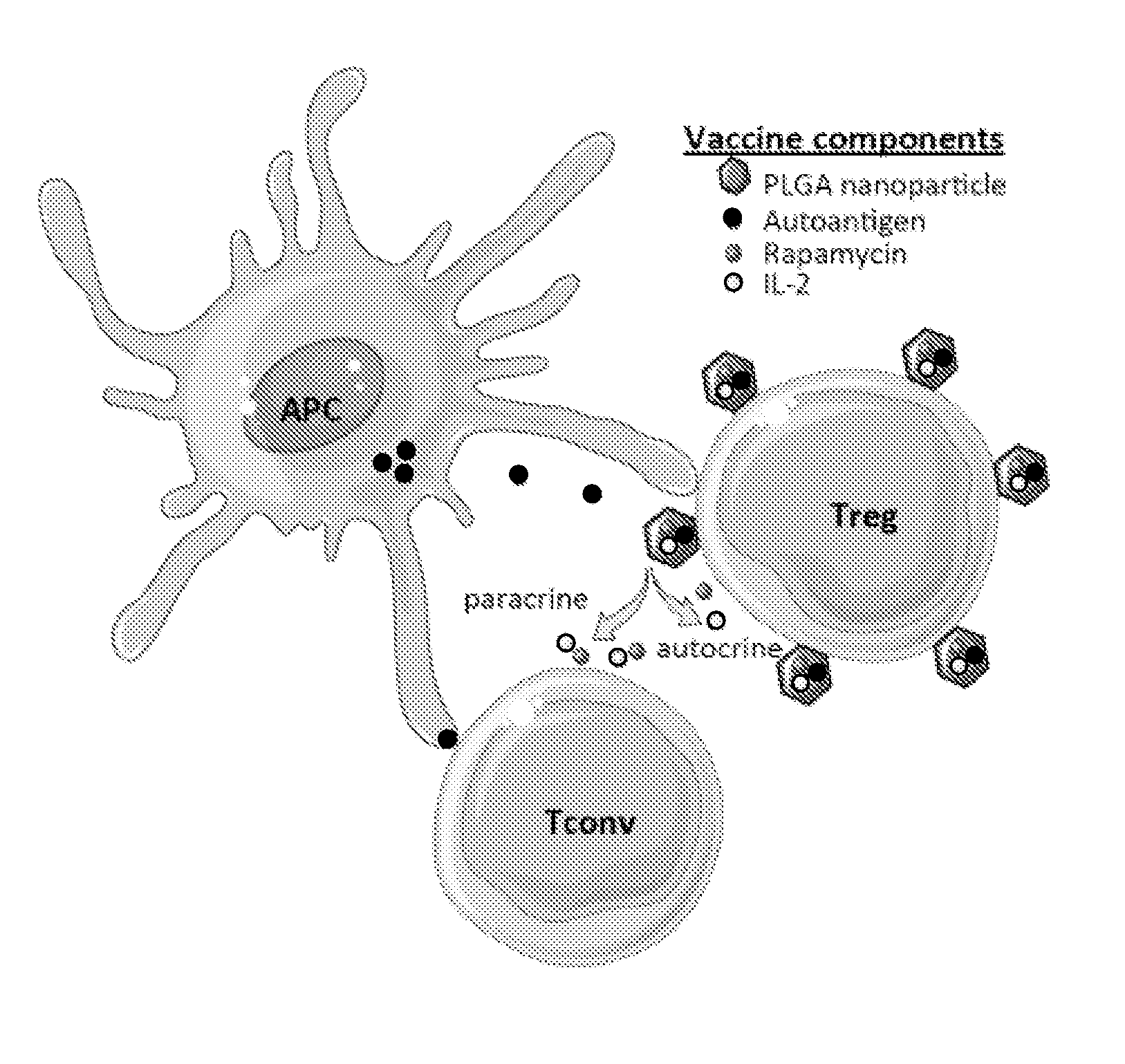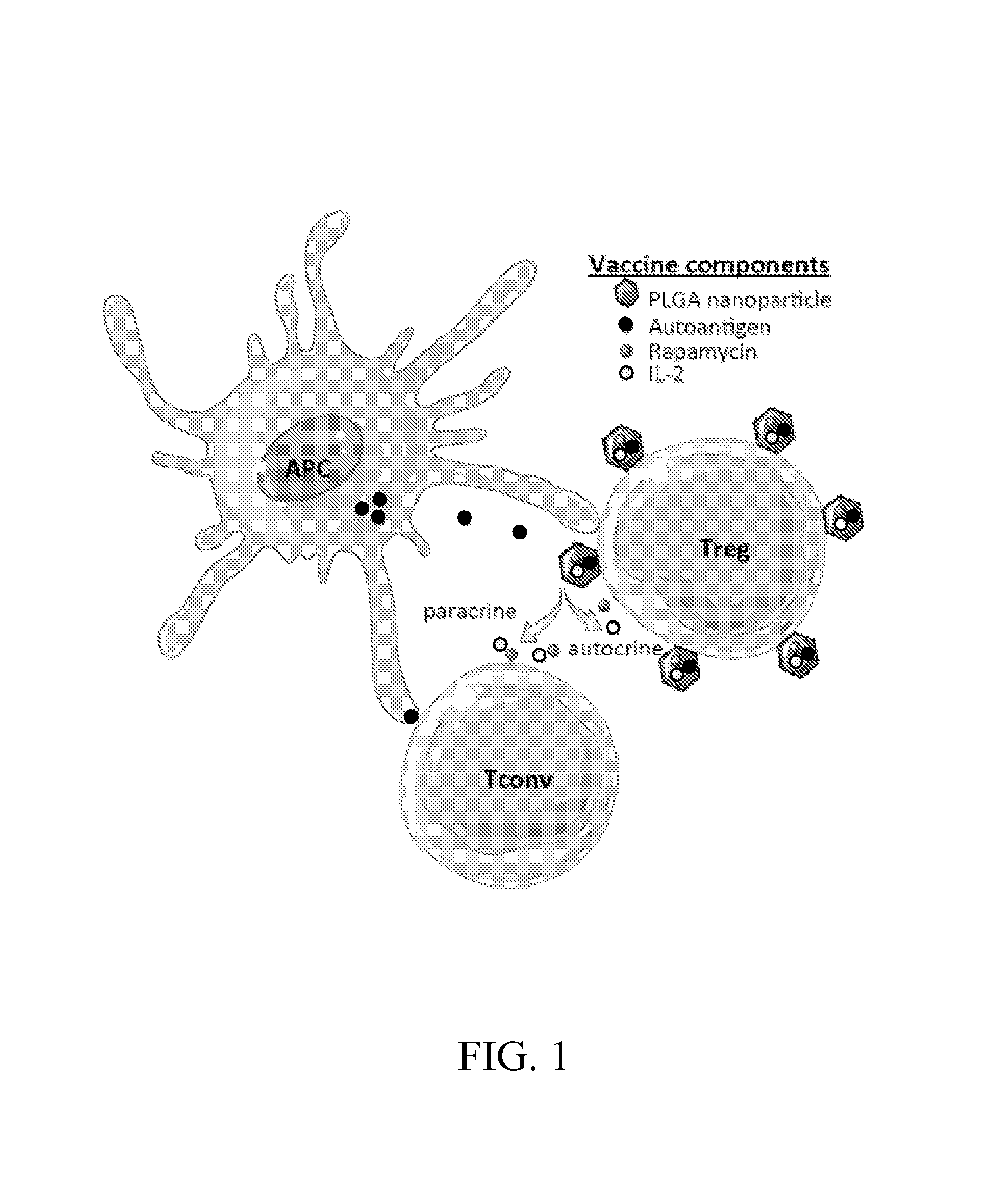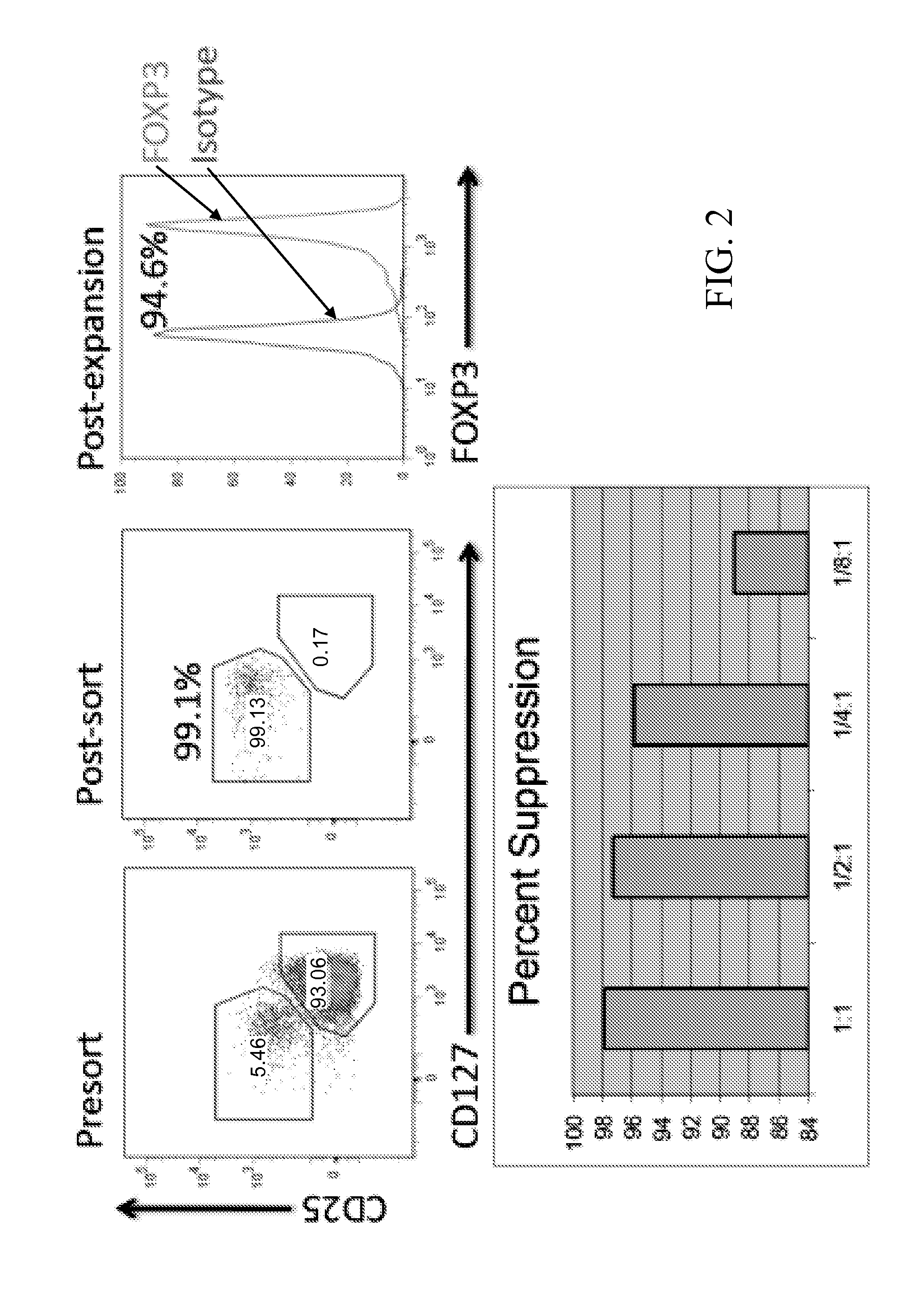Materials and methods for modulating immune responses
a technology of immune response and material, applied in the field of material and method for modulating immune response, can solve the problems of morbidity and mortality, current treatment regimes for t1d have only limited success, and traditional vaccine strategies that involve the administration of autoantigens (e.g., insulin) alone have not adequately blocked ongoing -cell auto-immunity
- Summary
- Abstract
- Description
- Claims
- Application Information
AI Technical Summary
Benefits of technology
Problems solved by technology
Method used
Image
Examples
example 1
Generation of Nanoparticles Loaded with Autoantigens and Regulatory T Cell Growth Factors
[0072]Nanoparticles are fabricated from the FDA approved suture biomaterial PLGA, the copolymer of lactic and glycolic acid in a 50:50 ratio. For encapsulation of the regulatory T cell (Treg) growth factor IL-2, the double-emulsion solvent evaporation method is used. The double-emulsion solvent preparation method is suitable for encapsulating hydrophilic molecules. For encapsulation of rapamycin, which enhances and stabilizes a Treg phenotype and is poorly soluble in water, the single emulsion method is used.
[0073]Nanoparticles (NP) having a diameter of approximately 300-500 nm are fabricated. Particle size and quality can be controlled by various factors, including input energy, the amount of surfactant present when forming the emulsion, humidity, the size of the droplets when injecting the aqueous phases into the organic phase, and the ratio of the organic phase to the outer aqueous phase. The...
example 2
Example 2
Development and Optimization of the Conjugation of Nanoparticles to In Vitro Expanded Regulatory T Cells and In Vitro Activity of Nanoparticle-Conjugated Cells
[0077]Various approaches can be used for conjugating nanoparticles (NPs) to T cells. In one embodiment, an amide bond can be formed between a carboxyl group of PLGA and a primary amine of any cell surface protein with the aid of 1-ethyl-3-[3-dimethylaminopropyl]carbodiimide hydrochloride (EDC) and N-hydroxysulfosuccinimide (NHS), which facilitate the formation and stablization of the amine-reactive ester intermediate. Briefly, NPs are stably conjugated to Jurkat cells, a T cell lymphoma cell line, via the formation of a stable covalent bond (FIG. 5A). The NP-conjugated Jurkat cell particles are detectable six days after conjugation (FIG. 5B). In another embodiment, a cross-linker, polyethylene glycol (PEG)-maleimide, which reacts with free sulfhydryl groups on the cell surface, can be used. This reaction resulted in ...
example 3
Example 3
Prevention and Treatment of Diabetes in the Non-Obese Diabetic (NOD) Mouse By Administration of NP-Coupled Regulatory T Cells
[0080]This Example identifies selective immunosuppressive agents that can be used to preserve regulatory T cells (Tregs) stability and to elicit a regulatory phenotype in conventional T cells. In addition, this Example improves adoptive transfer of Treg by co-administering small molecules in NPs to support and induce the regulatory phenotype.
[0081]Rapamycin, an mTOR inhibitor, has been shown to induce and expand Treg population. It inhibits the mTOR-Akt pathway, and, thus, results in the Akt-mediated inhibition of Foxo proteins. Foxo proteins are required for FOXP3 induction, which is the most important mediator of the suppressive function of Treg. The mTOR-akt pathway is also required for cell survival and proliferation; therefore, downregulating the mTOR-akt pathway induces FOXP3 but impairs Treg expansion.
[0082]Cilostamide enhances the regulatory ...
PUM
| Property | Measurement | Unit |
|---|---|---|
| size | aaaaa | aaaaa |
| size | aaaaa | aaaaa |
| diameter | aaaaa | aaaaa |
Abstract
Description
Claims
Application Information
 Login to View More
Login to View More - R&D
- Intellectual Property
- Life Sciences
- Materials
- Tech Scout
- Unparalleled Data Quality
- Higher Quality Content
- 60% Fewer Hallucinations
Browse by: Latest US Patents, China's latest patents, Technical Efficacy Thesaurus, Application Domain, Technology Topic, Popular Technical Reports.
© 2025 PatSnap. All rights reserved.Legal|Privacy policy|Modern Slavery Act Transparency Statement|Sitemap|About US| Contact US: help@patsnap.com



